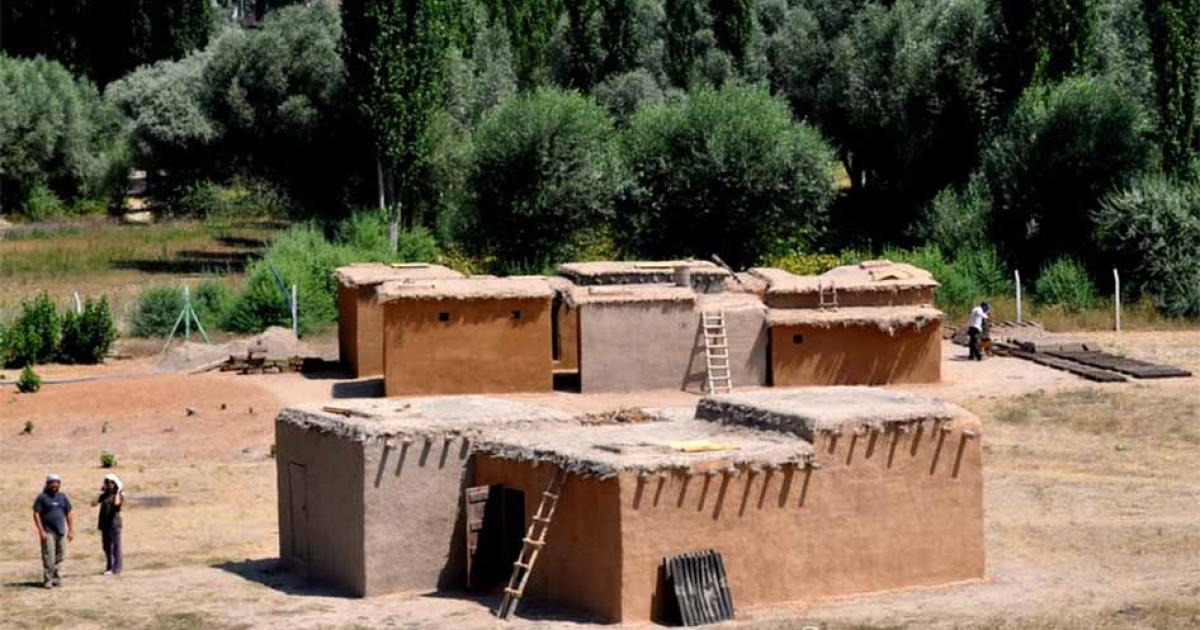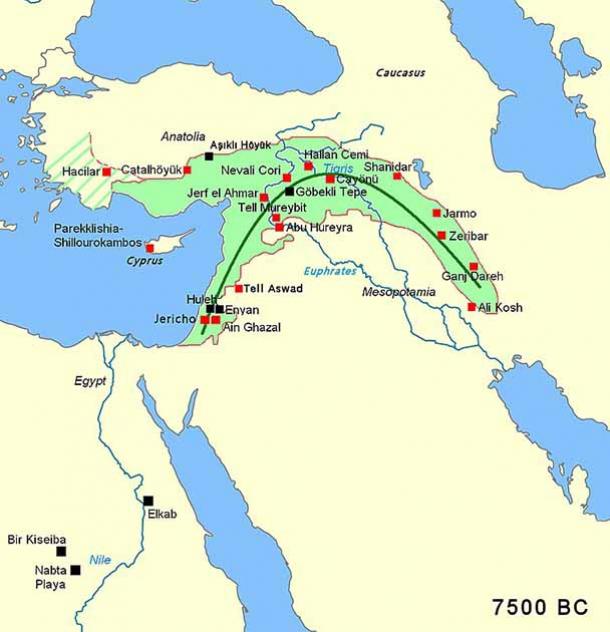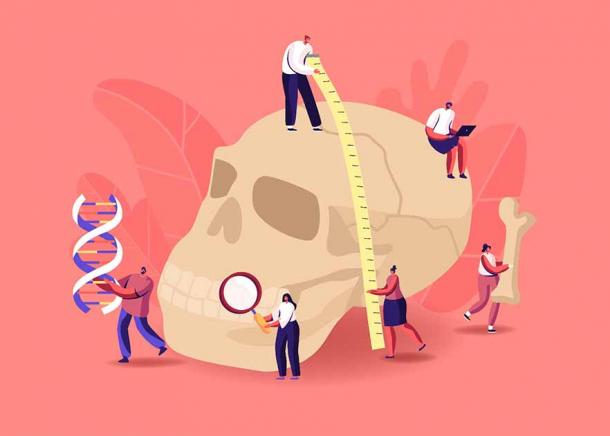
Ancient DNA Reveals Anatolian Neolithic Revolution Migration Patterns
Beginning approximately 12,000 years ago, the Neolithic Revolution sparked one of the most profound and lasting changes in human history. Humanity’s adoption of agriculture as an alternative to the hunter-gatherer lifestyle altered the course of societal evolution forever, and the culture that emerged formed the foundation for the world that more than seven billion people reside in today.
Ancient historians and archaeologists know a lot about the “when” and “why” of the Neolithic Revolution. But many questions remain about the “how” of the dramatic transformation that saw cultures abandon hunter-gathering in favor of domesticating and cultivating plants, raising animals for food, and creating permanent settlements.
A new study appearing in the journal Science offers fresh information about how the Neolithic Revolution or the Agricultural Revolution developed in the lands of Anatolia (modern-day Turkey), which was adjacent to the Fertile Crescent (a wide strip of land in the Middle East) where the agricultural lifestyle first took hold.
The truth was revealed in a study of ancient DNA samples extracted from the skeletal remains of individuals who lived in Anatolia, the Fertile Crescent, Mesopotamia (southeastern Turkey and northern Iraq), and elsewhere in the Near East (southern Europe and western Asia) during the Neolithic period.

The Neolithic Revolution occurred in a fairly well-defined area, as this map clearly shows, and then from there it spread in all directions but especially through migrations north to Anatolia, which lay just on the edge of the Agricultural Revolution. (GFDL / CC BY-SA 3.0)
Anatolia’s Neolithic Revolution Migrations And Ancient DNA
Through a careful analysis of DNA mixtures, scientists were able to trace the movements of people across the Near Eastern landscape in the early Neolithic. They found that migration into Anatolia coincided with critical developments in farming techniques and practices in that region during that period, suggesting that farmers from nearby lands were instrumental somehow in the advancement.
- A History of the Crusades As Told by Crusaders' DNA
- Mammoth DNA Breaks Record for World’s Oldest Sequence
The scientists discovered that in the Pre-Pottery era (approximately 10000 to 6500 BC, with regional variations), farmers originally from Mesopotamian migrated to Anatolia and intermixed with the locals quite freely. About the time pottery was first invented, around 7000 BC (there is some overlap between the Pre-Pottery and Pottery eras), another wave of farmers from Mesopotamia moved into Anatolia, along with other farming migrants from the Levant (modern-day Israel, Palestine, Jordan, Lebanon, and Syria). The existence of these two waves of migration were proven by the DNA examinations highlighted in the recent study, which revealed DNA fingerprints left by the different migrating groups.
It would be too simple to suggest that migrants from Mesopotamia and the Levant brought farming to Anatolia. What they would have brought is certain practices and concepts that were well adapted to the regional climate, which would then have been mixed with local innovations to produce a new and unique farming culture.

The ancient DNA Science study featured on the cover of the current journal issue was extraordinary in scope and involved more than 200 contributors. (Science)
Mapping the DNA of Migration With Many Different Scientists
The scope of this new study was extraordinary. The Science study lists more than 200 co-authors or contributors to this project, comprising a multidisciplinary team of geneticists, archaeologists, anthropologists, and bioinformatics specialists from many different nations. The members of this illustrious and large team analyzed DNA data collected from throughout the relevant regions and used it to create a computer model mapping population movements in prehistoric times.
The idea was that DNA traces in genomes from outside the precise local region would indicate the arrival of migrants. By establishing when outsider DNA entered various population groups, and where exactly it entered them, it would be possible to create a map showing when certain peoples arrived in specific places. The map produced was quite precise and detailed and reveals that ancient agricultural people were apparently on the move in search of new lands.
Given the study’s focus on the Neolithic period, it was inevitable that questions would arise about how farming and agriculture in the Near East would have been affected by migration.
“We were curious to learn more about the early farmers of North Mesopotamia—the area between the Tigris and Euphrates rivers—and their connections with other population groups in the region,” study lead author Iosif Lazaridis from Harvard University said, in a quote reported by Nature Middle East. “The DNA traces of the past are finite and will one day be obliterated by time. It is our responsibility to learn as much as possible and bequeath this knowledge to future generations.”
The discovery that people were entering Anatolia at the exact moment the Neolithic Revolution was accelerating is highly significant. This is certainly no coincidence, as the combined efforts of the different population groups to improve their farming methodologies would have made rapid agricultural advancement far more likely to occur.

Modern archaeology is changing as fast as modern technology changes and now ancient DNA studies are changing how we view the past in new and often “corrective” ways. (ivector / Adobe Stock)
Ancient DNA Revealed as Powerful Tool to Aid Historical Research
Contrary to the apparent significance of their discoveries, the researchers were working with an extremely limited data set. Techniques that allow for the extraction and analysis of DNA from ancient bones have advanced by leaps and bounds in the past decade or so and represent a major game-changing development in archaeology. However, it is still incredibly difficult to find old bones with their genetic material intact and in a recoverable state.
In this latest study, the genetic samples analyzed came from just 90 skeletons from Neolithic period burials. This included 49 individuals from Anatolia, including three from Pre-Pottery sites in Boncuklu Tarla in Mardin, Turkey. Combined with DNA data taken from two skeletons recovered in Iraq, these five individuals have provided all the ancient Mesopotamian DNA that has ever been extracted.
- Decade of DNA Analysis Reveals Astonishing Truths About Our Past
- DNA of First Settlers of Scandinavia Gleaned from Ancient Chewing Gums
The good news is that despite the small data set, DNA studies are definitive and establish absolute connections between peoples in different regions. When the sample sizes are small, however, it can create some uncertainty about the direction of the travel.
People undoubtedly came to Anatolia from Mesopotamia and the Levant as migrants. But more study will be needed (involving more recovered DNA samples if they are eventually found), to determine whether or not people from Anatolia traveled to Mesopotamia and the Levant, to further increase the level of genetic and cross-cultural exchange.
One thing the researchers can say for sure is that the migration into Anatolia occurred on an impressively large scale. They can’t determine the precise numbers of migrants who entered, but their study found residents of ancient Anatolia in the relevant periods had a genetic heritage that included between 30 and 50 percent Mesopotamian and/or the Levantine DNA. The migrants must have been welcomed by the locals, who undoubtedly appreciated and benefitted from their agricultural theories and practices.
Top image: The Neolithic Revolution was characterized by permanent human settlements and the invention of agriculture starting about 10,000 years ago. This is what the early Neolithic homes looked like in Pre-Pottery Neolithic B housing in Aşıklı Höyük, modern Turkey. Source: Sarah Murray / CC BY-SA 2.0
By Nathan Falde

















Comments
This almost reminded me of a Shakespeare play.
Much Ado About Nothing.
I have to agree with Pete Wagner. Such slim evidence is why so many believe the earth to be flat.
Well, when you disagree with the first paragraph, and keep reading to the end, where you disagree with the final sentence, at least you’re respecting the effort.
Nobody gets paid to tell the truth.